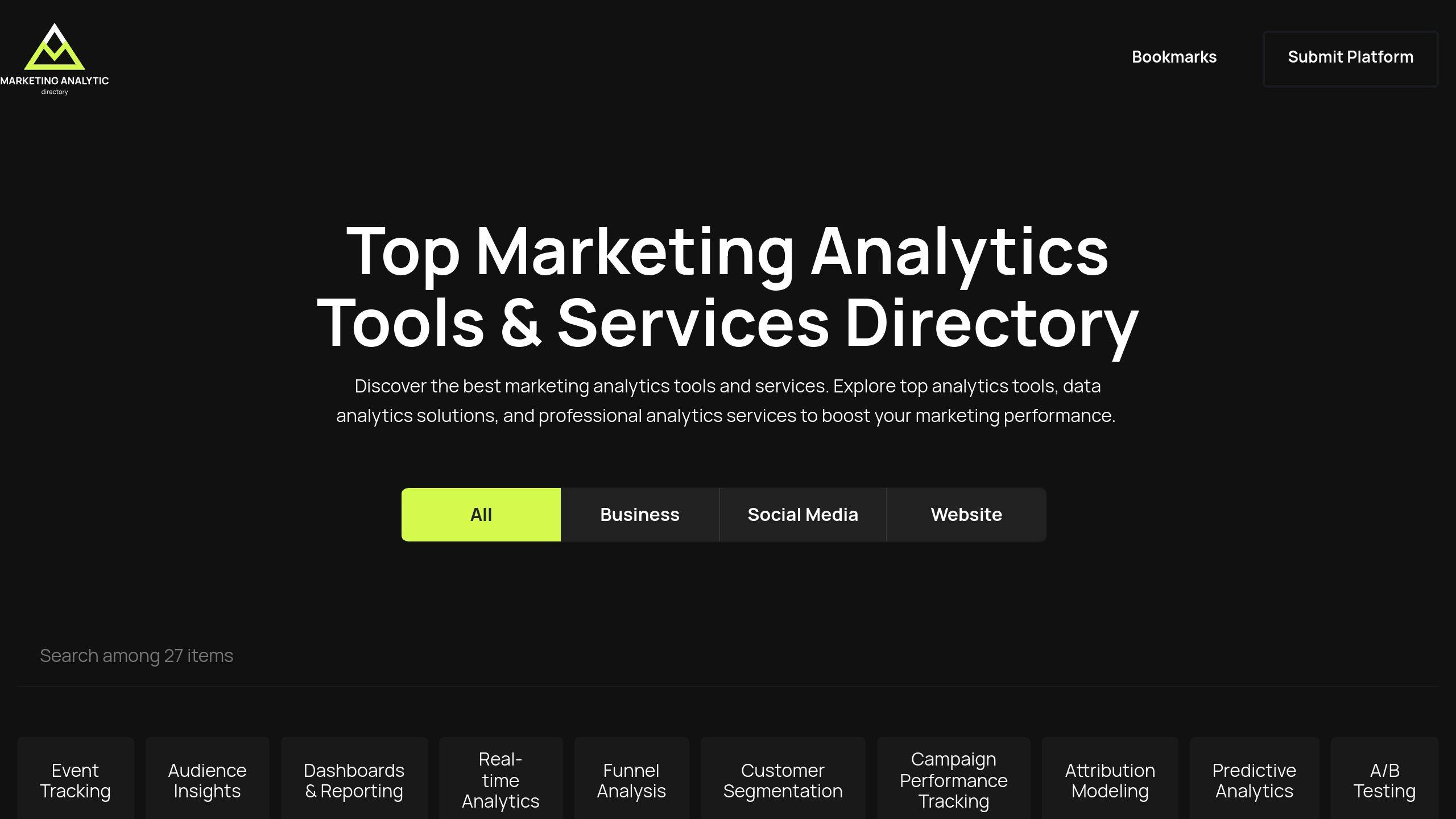Mapping customer journeys with cross-channel data helps businesses understand how customers interact across platforms and improve their experiences. Here's a quick rundown of the process:
- What It Is: Customer journey mapping outlines every touchpoint a customer has with your brand.
- Why It Matters: Combining data from multiple channels (website, social media, CRM, etc.) gives a complete view of customer behavior.
- Steps to Follow:
- Gather Data: Collect data from tools like analytics platforms, CRM systems, and customer feedback.
- Integrate Data: Use systems like Customer Data Platforms (CDPs) to unify information.
- Create Profiles: Build detailed customer personas based on behavioral, demographic, and engagement data.
- Map Journeys: Track interactions across channels and identify gaps or pain points.
- Improve: Use insights to resolve issues, personalize experiences, and test solutions for better outcomes.
This process ensures businesses can visualize customer interactions and continuously optimize their strategies for better engagement and satisfaction.
1: Gathering and Integrating Cross-Channel Data
Identifying Data Sources
To map customer journeys effectively, start by collecting data from important interaction points across different channels.
| Data Source Type | Description | Key Information Captured |
|---|---|---|
| Analytics Tools | Website analytics platforms | Website behavior, traffic sources, conversion paths |
| CRM Systems | Customer relationship platforms | Customer details, purchase history, support tickets |
| Social Media | Social networking platforms | Brand mentions, engagement metrics, sentiment |
| Customer Service | Support interaction systems | Customer issues, resolution times, satisfaction scores |
| Survey Data | Feedback collection tools | Direct customer feedback, satisfaction levels |
These sources provide the groundwork for understanding how customers interact with your brand and help in mapping their journeys.
Data Integration Techniques
Once you've identified the data sources, the next step is to combine them into a cohesive system. Here's how:
- Use a Common Identifier System: Set up a unified customer ID across all platforms to track individuals seamlessly across channels.
- Implement Real-Time Synchronization: Automate updates to keep customer profiles accurate, especially during high-traffic periods.
- Leverage Data Platforms: Tools like Customer Data Platforms (CDPs) bring together information from various sources into one accessible hub.
- Maintain Data Quality: Regularly audit for consistency, remove duplicates, validate data formats, and ensure compliance with privacy laws like GDPR and CCPA.
For help choosing the right analytics tools, check out the Marketing Analytics Tools Directory for detailed comparisons of solutions tailored to cross-channel data integration and analysis.
2: Creating Detailed Customer Profiles
Analyzing Customer Data
Building detailed customer profiles begins with digging into cross-channel data to spot patterns that matter. These patterns help you map out customer journeys by highlighting key touchpoints and behaviors.
Here are some important metrics to focus on:
| Metric Category | Description & Data Points |
|---|---|
| Behavioral | Includes purchase history, browsing habits, and content interactions to reveal preferences and decision-making trends. |
| Demographic | Covers age, location, and income details for effective segmentation. |
| Interaction | Tracks channel preferences, response rates, and support tickets to understand communication preferences. |
| Engagement | Measures metrics like time spent, visit frequency, and conversion rates to assess journey performance. |
If you're using Adobe Customer Journey Analytics, you can integrate datasets with a shared namespace ID. This creates a unified view of customer actions across channels, making your analysis more precise [3].
Armed with this data, you can group customers into distinct personas that shape your marketing strategies.
Building Customer Personas
Turn your cross-channel data into actionable customer personas that represent your key audience segments. Use both numbers and insights from customer interactions to make these personas meaningful.
| Persona Component | Description |
|---|---|
| Demographics & Preferences | Basic customer details combined with their preferred ways of interacting with your brand. |
| Pain Points | Common struggles or frustrations identified through customer feedback and interactions. |
| Goals & Motivations | The main reasons customers engage with your brand or products. |
Keep these personas fresh by regularly updating them as customer behaviors shift. These profiles are your roadmap for predicting actions and improving interactions at every stage of the customer journey.
3: Mapping Customer Journeys Across Channels
Tracking Customer Touchpoints
Once you’ve developed detailed customer personas, the next step is mapping out their interactions across various channels. This means documenting and analyzing every way customers engage with your brand.
| Touchpoint Category | Key Elements to Track | Data Collection Method |
|---|---|---|
| Online Channels | Website visits, app usage, email clicks, social media interactions | Customer Data Platforms (CDPs) |
| Direct Contact | Customer service calls, chat support | CRM systems |
| Offline Activities | Store visits, event participation | Point-of-sale systems |
Tools like CDPs and DMPs are essential for pulling together data from these sources, providing a unified view of customer interactions [2][4].
Identifying Journey Gaps and Opportunities
By analyzing customer touchpoints, you can uncover areas where the experience can be improved and find opportunities to make it more engaging. Here’s how to approach it:
| Analysis Area | Purpose | Action Items |
|---|---|---|
| Journey Friction Points | Identify where customers drop off or face challenges | Develop targeted solutions to streamline transitions |
| Engagement Patterns | Understand when and how customers interact | Adjust timing and channel strategies for better engagement |
Bringing together data from multiple sources allows for a complete view of the customer journey [2]. This unified perspective helps pinpoint where users face challenges or switch channels unnecessarily, so you can address these issues and create a smoother experience [1].
"Ensuring that customer journey maps are dynamic involves regularly updating the maps based on new data and insights, and continuously monitoring customer behaviors and preferences" [1].
sbb-itb-5174ba0
Customer Journey Mapping Step By Step Guide - Using Marketing Analytics
4: Improving the Customer Journey with Data Insights
After mapping out customer journeys and spotting areas for improvement, the next step is using insights to enhance the overall experience. Synchronizing data across channels ensures that these improvements are based on a complete view of customer interactions, making updates more precise and effective.
Tackling Pain Points and Personalizing Experiences
By analyzing behavioral trends, satisfaction scores, and conversion data, businesses can identify friction points and create more tailored experiences. The challenge lies in turning raw data into actions that genuinely improve customer satisfaction.
| Analysis Focus | Data Source | Action Strategy |
|---|---|---|
| Behavioral Patterns | Customer interaction logs | Adjust timing and refine channel strategies |
| Drop-off Points | Conversion funnel analytics | Simplify processes and eliminate barriers |
| Customer Preferences | CRM and feedback data | Offer personalized recommendations |
Metrics like cart abandonment, delays in customer service resolutions, or frequent switching between channels can signal problem areas. By studying these indicators, businesses can implement specific fixes that make the customer experience smoother and more enjoyable.
Testing and Adjusting for Better Results
Improving the customer journey requires ongoing testing. This process typically includes three steps: measuring current performance, conducting A/B tests to evaluate potential solutions, and implementing changes that deliver proven results. Key performance indicators (KPIs) like engagement, conversions, and satisfaction levels help track progress.
| Testing Phase | Key Activities | Success Metrics |
|---|---|---|
| Initial Assessment | Evaluate baseline performance | Current conversion rates and satisfaction |
| A/B Testing | Test and compare different solutions | Engagement rates and task completion times |
| Implementation | Roll out successful improvements | Impact on KPIs and customer feedback |
It's essential to focus on measurable outcomes rather than assumptions. Keep an eye on both immediate and long-term effects, ensuring changes don't negatively impact other parts of the customer journey. Advanced analytics tools can track these outcomes across channels and customer groups, providing a clearer picture of what’s working.
"Continuous testing and refinement should be an ongoing process that involves regularly reviewing customer data, identifying areas for improvement, and implementing changes. This can be achieved by setting up a feedback loop that includes customer feedback, data analysis, and iterative testing to ensure that the customer journey is continuously optimized" [1][5].
Using advanced analytics tools ensures that these updates are consistently monitored and adjusted, maintaining a seamless and effective customer experience across all interactions.
Tools for Customer Journey Mapping
Once you’ve got a handle on customer journeys and data integration, the next step is picking the right tools to execute your strategy. Modern analytics platforms can help track, analyze, and improve customer interactions across various touchpoints.
Marketing Analytics Tools Directory

This directory makes it easier to find tools for cross-channel data integration and journey mapping by organizing them based on their core functions.
| Tool Category | Primary Functions | Best For |
|---|---|---|
| Real-time Analytics | Live data tracking and visualization | Gaining immediate customer insights |
| Campaign Tracking | Multi-channel performance monitoring | Optimizing marketing campaigns |
| Customer Intelligence | Behavioral analysis and segmentation | Understanding audience behavior |
| Integration Platforms | Cross-channel data synchronization | Creating a unified customer view |
After identifying potential tools, take a closer look at their features to ensure they align with your customer journey mapping objectives.
Key Features to Look for in Analytics Tools
When choosing analytics tools, certain features are essential for effective cross-channel analysis. For example, Adobe Customer Journey Analytics offers a standout feature: it "enables cross-channel analysis by unifying data from various web, mobile, and offline properties, providing a single consolidated view of customer behavior" [3].
| Feature Category | Key Capabilities | Business Impact |
|---|---|---|
| Data Integration | Merging data from multiple platforms | A complete view of the customer journey |
| Visualization Tools | Interactive journey maps | Identifying patterns more clearly |
| Real-time Processing | Instant data updates | Responding to customer behavior quickly |
| Testing Capabilities | Data-backed adjustments | Making proven, effective changes |
Customer Data Platforms (CDPs) also play a crucial role by consolidating data from various sources into one unified view. They help businesses build detailed customer profiles while maintaining data privacy, ensuring a seamless experience across all touchpoints.
The right tools not only collect data but also transform it into actionable insights. By selecting tools with these features, you can ensure your customer journey mapping efforts are both efficient and scalable.
Conclusion: Summarizing the Process
Key Points
Creating customer journey maps using cross-channel data involves integrating and analyzing information from multiple platforms. This process helps uncover insights into customer behavior and interactions. By understanding these behaviors and touchpoints, marketers can make informed decisions to improve the customer experience.
Next Steps for Marketers
To get started, marketers should focus on building a solid foundation for cross-channel data integration and journey mapping.
| Phase | Action | Outcome |
|---|---|---|
| Setup | Combine cross-channel data | A complete view of customers |
| Analysis | Chart customer journeys | Better understanding of behaviors |
| Optimization | Tailor experiences | Enhanced customer satisfaction |
| Refinement | Test and adjust | Ongoing improvements |
The Marketing Analytics Tools Directory can help you compare tools that support this process. Begin with your main channels, extract insights, and expand your efforts to include additional touchpoints as you progress.
Customer journey mapping isn’t a one-and-done task. It’s an evolving process that keeps pace with changing customer preferences and behaviors.
"Continuous testing and refinement should be an ongoing process that involves regularly reviewing customer data, identifying areas for improvement, and implementing changes. This can be achieved by setting up a feedback loop that includes customer feedback, data analysis, and iterative testing to ensure that the customer journey is continuously optimized" [1][5].


